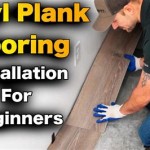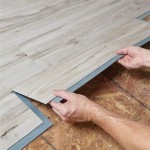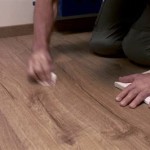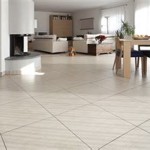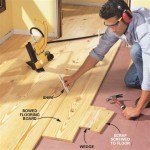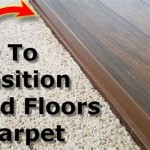Understanding Discontinued Laminate Flooring by Shaw
The flooring industry, particularly the laminate segment, is subject to constant evolution. Manufacturers like Shaw Industries, a prominent player in the market, regularly introduce new styles, technologies, and designs. Consequently, certain product lines are phased out to make way for these innovations. This process results in what is known as discontinued laminate flooring. Understanding the implications of discontinued Shaw laminate is crucial for homeowners, contractors, and retailers alike.
Discontinuation of a laminate flooring line doesn't necessarily indicate a flaw or deficiency in the product itself. Rather, it's a strategic business decision driven by factors such as shifting consumer preferences, advancements in manufacturing processes, and the introduction of more competitive offerings. Shaw, like other major flooring companies, invests heavily in research and development, leading to a continuous cycle of product updates and eventual retirements.
This article aims to provide a comprehensive overview of discontinued Shaw laminate flooring, exploring the reasons behind discontinuation, the challenges it presents, and the potential solutions available for those seeking to match or replace existing floors.
Reasons for Discontinuation
Several factors contribute to the decision to discontinue a particular laminate flooring line. These reasons can be broadly categorized as market-driven, technology-driven, and business-driven.
Market-Driven Factors: Consumer demand plays a significant role in product lifecycles. Flooring trends are constantly evolving, with preferences shifting towards specific colors, textures, and plank sizes. If a particular laminate style falls out of favor with consumers, its sales volume will likely decline. Shaw, like any business, needs to allocate resources to products with higher demand and growth potential. Consequently, less popular styles are often discontinued to make room for more marketable options.
Furthermore, the rise of competing flooring materials, such as luxury vinyl plank (LVP) and engineered hardwood, can also impact the demand for laminate. If consumers increasingly opt for alternatives, manufacturers may adjust their laminate offerings accordingly, leading to the discontinuation of certain lines. Economic conditions also influence consumer spending habits. During periods of recession or economic uncertainty, consumers may prioritize affordability, leading to a shift in demand towards lower-priced flooring options. This can result in the discontinuation of higher-priced laminate lines that are less competitive in a cost-sensitive market.
Technology-Driven Factors: Advancements in manufacturing technology and materials science also contribute to the discontinuation of laminate flooring. As new technologies emerge, manufacturers can produce laminates that are more durable, water-resistant, and visually appealing. These advancements often render older laminate styles obsolete. For example, improvements in click-lock installation systems have made laminate flooring easier to install, leading to the discontinuation of older styles with less user-friendly installation methods. Similarly, advancements in printing technology have enabled manufacturers to create laminate floors that more closely mimic the look and feel of natural wood or stone. These advancements drive the discontinuation of laminate styles with less realistic visuals.
Shaw constantly invests in research and development to incorporate the latest technologies into its laminate flooring products. This continuous innovation cycle results in the ongoing introduction of new and improved laminate styles, which inevitably leads to the discontinuation of older, less technologically advanced products.
Business-Driven Factors: Business decisions related to profitability, efficiency, and supply chain management can also contribute to the discontinuation of laminate flooring. If a particular laminate line is not generating sufficient profit margins, it may be discontinued to improve overall business profitability. Factors contributing to low profitability can include high manufacturing costs, low sales volume, and intense price competition.
Furthermore, streamlining the product portfolio can improve operational efficiency. By reducing the number of laminate styles offered, Shaw can simplify manufacturing processes, reduce inventory costs, and improve supply chain management. Discontinuing less popular styles allows the company to focus its resources on the more successful and profitable lines.
Changes in raw material availability or pricing can also impact the decision to discontinue a laminate flooring line. If a key raw material becomes scarce or significantly more expensive, it may become uneconomical to continue producing a particular laminate style. In such cases, manufacturers may opt to discontinue the product rather than absorb the increased costs.
Challenges of Discontinued Laminate Flooring
Discontinued laminate flooring presents several challenges for homeowners and contractors. The primary challenge is the difficulty in sourcing matching materials for repairs, renovations, or additions to existing floors. When a laminate style is discontinued, the availability of replacement planks becomes limited, making it difficult to maintain a consistent aesthetic throughout a space.
Matching Existing Floors: Finding an exact match for discontinued laminate can be incredibly difficult. Even if a similar style is available, subtle differences in color, texture, and plank size can make it obvious that the flooring is not uniform. This can be particularly problematic in large open spaces where inconsistencies are more noticeable. Furthermore, the color of laminate flooring can change over time due to exposure to sunlight and wear and tear. This makes it even more challenging to find a perfect match for older floors.
Limited Availability: Once a laminate line is discontinued, retailers typically sell off their remaining stock. This means that the availability of replacement planks becomes increasingly limited over time. Homeowners may have to search extensively through online marketplaces, salvage yards, and flooring liquidators to find the materials they need. Even if a source is found, the quantity of available planks may be insufficient to complete a repair or renovation project.
Potential for Dissatisfaction: When homeowners are unable to find a matching replacement for discontinued laminate flooring, they may be forced to choose a less desirable alternative. This can lead to dissatisfaction with the overall look and feel of their space. In some cases, homeowners may even have to replace the entire floor, which can be a costly and disruptive undertaking. The inability to repair or seamlessly extend existing floors is a significant drawback associated with discontinued laminate flooring.
Impact on Property Value: While not always significant, mismatched flooring can slightly impact property value. Potential buyers may view mismatched or incomplete flooring as a negative attribute, potentially impacting their offer price. While a minor issue for some, for others it represents an additional task and expense after purchasing the property. This is especially true if the inconsistent flooring is in a high-traffic or visually prominent area.
Potential Solutions
Despite the challenges posed by discontinued laminate flooring, several potential solutions exist to mitigate the impact. These solutions range from proactive measures taken before discontinuation to reactive strategies employed after a product has been phased out.
Proactive Measures: Homeowners planning to install laminate flooring should inquire about the expected lifecycle of the chosen style. While manufacturers cannot guarantee the longevity of a particular product line, asking about its projected availability can provide valuable insight. If long-term availability is a concern, consider selecting a laminate style that is widely popular and expected to remain in production for an extended period. Purchasing extra boxes of the original flooring during the initial installation can also provide a reserve for future repairs. These extra planks should be stored in a dry, climate-controlled environment to prevent damage. This proactive approach can significantly reduce the risk of facing matching issues in the future.
Reactive Strategies: When facing discontinued laminate flooring, several reactive strategies can be employed. The first step is to contact Shaw Industries directly or consult with authorized Shaw retailers. They may be able to provide information on remaining stock or suggest alternative laminate styles that closely resemble the discontinued product. Exploring online marketplaces, such as eBay and Craigslist, can also be a viable option. Individuals or businesses may be selling leftover planks from previous installations. Flooring liquidators and salvage yards are also potential sources for discontinued laminate flooring. These businesses specialize in buying and selling surplus or discontinued building materials.
If an exact match cannot be found, consider using planks from less visible areas, such as closets or under furniture, to repair damaged sections in high-traffic areas. This can help maintain a consistent appearance in the most visible parts of the floor. Another option is to create a decorative transition between different flooring styles. This can be achieved by using transition strips or by installing a border of a complementary flooring material. This approach can visually break up the space and minimize the impact of the mismatched flooring. In some cases, it may be necessary to replace the entire floor if a suitable replacement cannot be found. When selecting a new laminate style, consider choosing a product that is readily available and expected to remain in production for an extended period.
Professional Assistance: Consulting with a flooring contractor or interior designer can also be beneficial. These professionals have experience working with discontinued flooring products and can offer expert advice on potential solutions. They may be able to source replacement planks from their network of suppliers or suggest creative ways to address the mismatched flooring. A professional installer can also ensure that any replacement planks are properly installed and blended with the existing floor.
Ultimately, understanding the reasons behind discontinued laminate flooring, the challenges it presents, and the potential solutions available is crucial for making informed decisions about flooring selection, maintenance, and replacement. Proactive planning and resourceful problem-solving can help homeowners and contractors navigate the complexities of discontinued laminate flooring and maintain the aesthetic appeal of their spaces.

Alisba Laminate Flooring Shaw Floor Discontinued Armstrong China Made In Com

Alisba Laminate Flooring Shaw Floor Discontinued Armstrong China Made In Com

Wood Floors Plus Waterproof Flooring Discontinued Shaw Goliath Wpc 2042v Driftwood Oak 12 Mm W 1mm Attached Pad 17 58 Sf Ctn

Alisba Laminate Flooring Shaw Floor Discontinued Armstrong China Made In Com

Alisba Laminate Flooring Shaw Floor Discontinued Armstrong China Made In Com

Wood Floors Plus Discontinued Shaw Awaken Hd Accent Wpc 7080 Saddle Bag 12 Mm W 1mm Attached Pad 17 96 Sf Ctn

Shaw Jefferson Golden 12 Mil X 7 In W 48 L Waterproof Lock Vinyl Tile Flooring 18 67 Sq Ft Case Hd83400203 The Home Depot

Shaw Intrigue 12mm Laminate At A Great Woodwudy Whole Flooring

Shaw Jefferson Radical 12 Mil X 7 In W 48 L Waterproof Lock Vinyl Tile Flooring 18 67 Sq Ft Case Hd83400820 The Home Depot

Wood Floors Plus Discontinued Shaw Awaken Hd Accent Wpc 7080 Saddle Bag 12 Mm W 1mm Attached Pad 17 96 Sf Ctn
Related Posts

